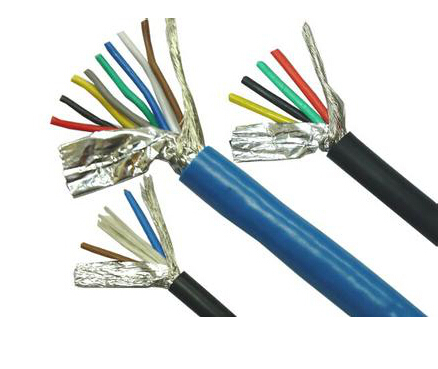Remote Control Excavator,Jy Amphibious Excavator Machine,Positioning Pile Excavator,Jy Amphibious Excavator Binzhou Jinyi Equipment Co.,Ltd , https://www.jyexcavator.com
Video monitoring cable common problems and solutions
1. For the coaxial cable with aluminum foil shielding, if the aluminum foil is not sticky when handling aluminum foil, all exposed aluminum foil should be stripped. If the aluminum foil adheres to the insulator and stands firmly, make sure that the conductor of the cut end of the insulator and the debris of the aluminum foil need to be cleaned to avoid short circuit.
2. For BCP-C3B or similar BNC non-step (straight) tailpipes, the direction of the tailpipe during installation is irrelevant. For one end of the BCP-C5FA or other tailpipe, there is a ramp (Cao line), and the tail pipe is also installed with no directionality. However, for trailing tailpipes, tailpipes such as BCP-C1 are directional.
3, cable connection strength refers to the cable when the cable is subjected to tensile stress to pull it out of the connector, the cable is subjected to the maximum load.
4. Different connectors have different insertion loss values. For plugs, the insertion loss is about 0.1dB (DC-2GHz) per connector.
5, video signal transmission generally uses direct modulation technology, in the form of baseband frequency (about 8MHz bandwidth), the most common transmission medium is coaxial cable. Commonly used special SYV75 ohm series coaxial cable, commonly used model is SYV75-5 (its non-relay transmission distance for video signal is generally 300-500m); when the distance is longer, SYV75-7, SYV75-9 or even Coaxial cable of SYV75-12 (In practical projects, the relayless transmission distance of the thick cable can reach 1km or more).
6, video surveillance line camera to monitoring host distance ≤ 100 meters, with 75-3/64P video line. The distance from the camera to the monitoring host is ≤200 meters and the 75-3/96P video cable is used. The distance between the camera and the monitoring host is less than or equal to 300 meters and the 75-5/96P video cable is used. Camera to monitoring host distance ≤ 500 meters, with 75-5/128P video line. The distance from the camera to the monitoring host is less than or equal to 800 meters, and the video line is monitored with 75-5-1/128P.
7, PTZ control line PTZ and controller distance ≤ 100 meters, with RVV6 × 0.5 sheath line. The distance between the gimbal and the controller is more than 100 meters and the RVV6×0.75 sheath cable is used.
8, lens control line using RVV4 × 0.5 sheath line.
9, the distance between the decoder communication line camera to the monitoring host ≤ 200 meters, should use RVVP2 x 0.5 shielded line camera to the monitoring host distance ≤ 500 meters, should use RVVP2 x 0.75 shielded wire.
10. If the distance between the video surveillance camera and the host computer exceeds 40 meters, we must consider using 220V centralized power supply to convert the camera to 12V to provide power to the camera. Under normal circumstances, 220V power supply, as long as the system is not too large, 8 Below, within 200 meters of the distance, you can choose RVV2 * 0.5 of the wire, if more than 8 lines are high-power infrared cameras, we must consider using RVV2 * 0.75 power supply.
Video surveillance is more and more widely used in today's life. The performance of the cable will also affect the stability of the monitoring operation. The effect of the screen transmission is also related to the cable. Below, we will introduce the common problems and solutions for video surveillance cables.